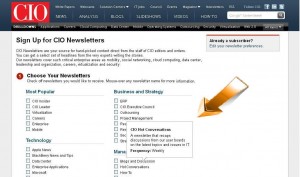Email Marketing: How to capture high-quality subscribers and avoid an inactive list
Remember when you were a kid and thought your parents were getting you the greatest present in the world? Maybe you were expecting a BB gun or a pony, but they got you socks instead? Or some other lame present?
Think back to that exact moment when you saw the present and thought “How did they fit a pony into that tiny box?” Then you opened it, blew out your candles, and wished for new parents.
That feeling of crushing disappointment should remind you of what it is like to have your expectations overlooked. That memory can help you improve the quality of your email database.
When people opt-into your emails, they have expectations of what they will receive. Your subscribers will probably not throw a temper tantrum and hurl cake on the walls if you miss their expectations. However, they will be more inclined to ignore your emails and mark them as spam, which undermines your email marketing.
The solution is to very clearly explain your email program at the point of opt-in. This will correctly set people’s expectations. They can decide if your emails have something they want. If they want it, great; they can sign up and become active subscribers. If they don’t want it, great; they will not sign up and not add to the dead weight in your database.
Here’s a good example of how CIO, an IT-management publication, sets expectations for its newsletters (click the image for a larger view).
CIO presents its newsletters in an organized list with clear titles. By mousing-over the titles, visitors can read short descriptions of the newsletters’ content and frequency. This tells subscribers whether the newsletter has the information they want and how often they’ll receive it.
This simple feature prevents people from signing up for newsletters they don’t want. They won’t click “spam” because they expected a daily newsletter to arrive monthly. And they won’t expect a “careers” newsletter to feature interview advice instead of job listings. Instead, people will sign up for newsletters they actually want and begin receiving them.
Failing to describe your email program leaves subscribers free to set their own expectations — and who knows what they’ll expect? They might want a weekly update on your company’s research, or steep discounts on BB guns and ponies. When you fail to deliver those ponies, subscribers will not respond well, if they respond at all.
Related resources
Email Marketing Chart: Most effective email list growth tactics
Marketing Research Chart: Email deliverability metrics improving … slightly
Email List Growth: Finding low-cost and no-cost ways to grow your database
B2B Email Marketing: Why renting third-party lists is among the worst tactics
Email Relevance Kaizen: 4 categories of data beyond the email database
Email Testing: More specific subject line improves open rate by more than 35%
Categories: Email Marketing Email Marketing, list building










